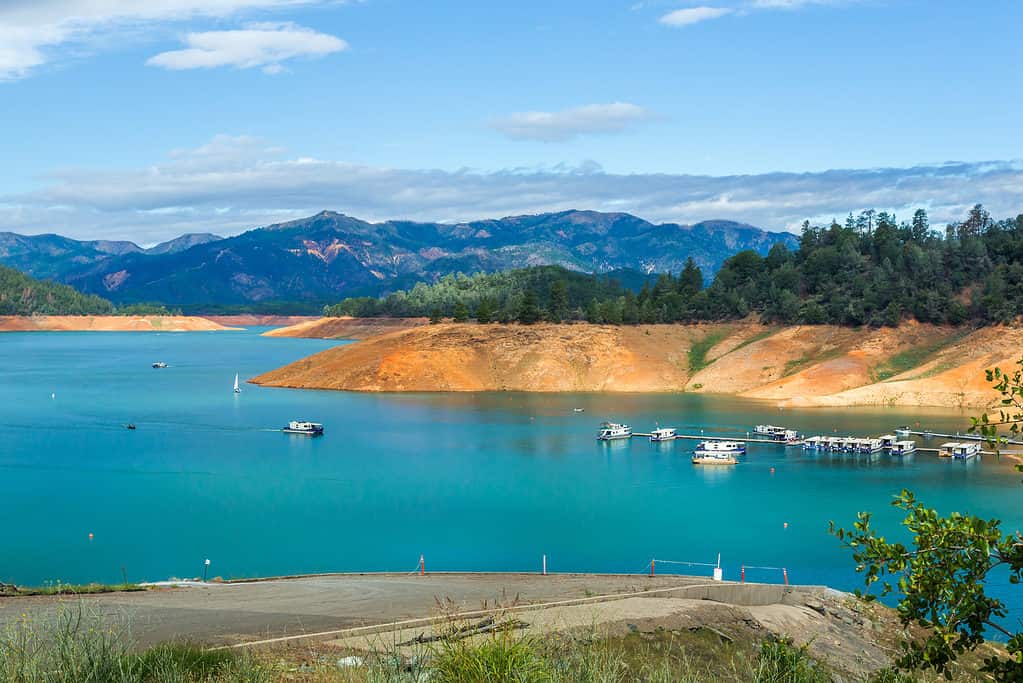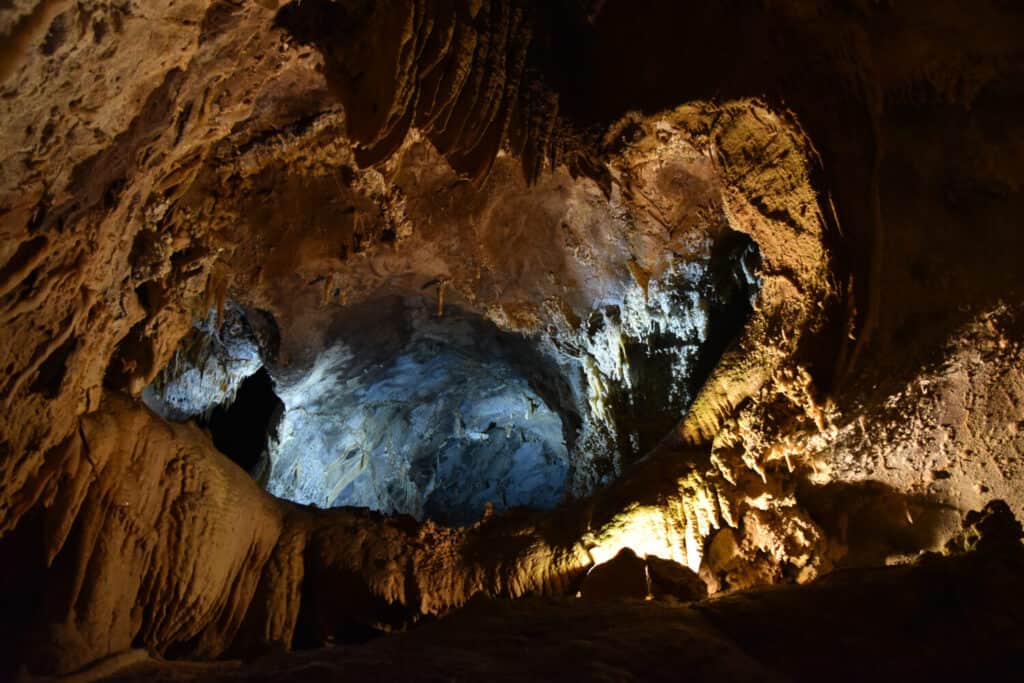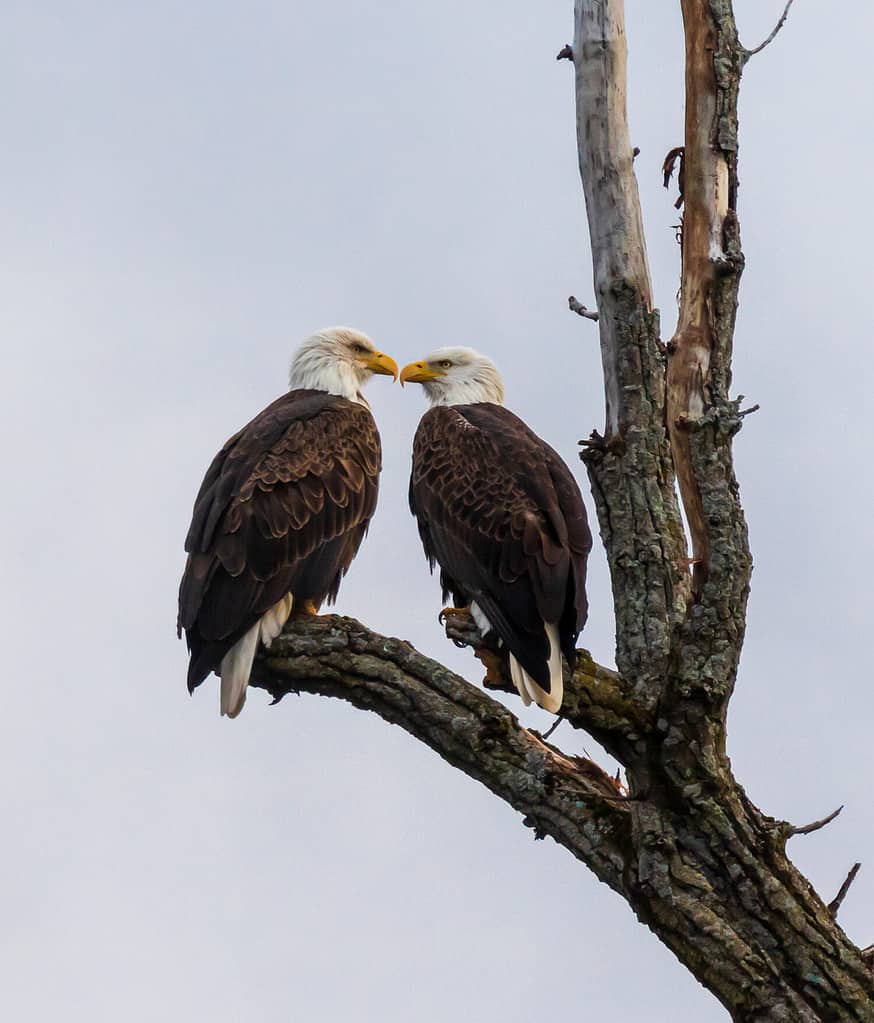Lake Shasta is the largest manmade lake and the third largest body of water in California. From its serene waters to its breathtaking views, Lake Shasta offers a respite from the work-a-day world. As you gaze across its shimmering waters and wonder about the secrets that lie beneath its sparkling surface, one question inevitably arises: just how deep is Lake Shasta? The answer is 517 feet at full pool. But what lurks in the depths is more than a simple measurement. So, don your wet suit and grab your snorkel, as we explore Lake Shasta, from her shores to her murky depths.

Shasta Lake is the largest manmade lake and the third largest body of water in California.
©iStock.com/Strekoza2
Lake Shasta: A Brief Overview
Lake Shasta is the largest reservoir in California. It is a popular recreational area located in the Northern part of the state. Shasta Dam, which impounds the waters of the Sacramento River, created the massive lake. The lake covers approximately 30,000 acres (12,000 hectares). It has a maximum depth of 517 feet (157 meters) when it’s at full capacity. Lake Shasta is fed by the Sacramento River and its tributaries. It serves as a critical reservoir in California’s water management system, storing water for irrigation, municipal use, and hydroelectric power generation. Commencing in 1938, construction of the dam was completed in 1945. As a result of the dam construction and the subsequent filling of the reservoir, several towns and communities were either partially or entirely submerged.

Shasta Dam, which impounds the waters of the Sacramento River, created the massive lake.
©Wirestock Creators/Shutterstock.com
Kennett, California
Creating reservoirs has historically required displacing or submerging entire towns. Reservoirs are typically formed by damming rivers, which results in the flooding of the surrounding valleys. Kennett, California was the principal town affected by the creation of Lake Shasta. Kennett was established in the late 1800s as a railroad stop on the C&O Railroad line. In the early 20th century, the Mammoth Copper Company brought a copper smelter to the town. The smelter refined the copper being mined in the area.
Kennett was a classic company town. The mining company not only operated the mines but also provided housing and amenities for its employees and their families. The town’s infrastructure and facilities were largely owned and controlled by the mining company. In his heyday, Kennett boasted a bustling commercial area, a school, a hospital, and a hotel. Legend has it that while many of Kennett’s residents sold their land to the government and moved on, a few stubborn holdouts didn’t leave until the water started to rise! Now the town lies hundreds of feet (meters) beneath the surface of Lake Shasta.

Now the town of Kennett lies hundreds of feet (meters) beneath the surface of Lake Shasta.
©1031638702/Shutterstock.com
Recreation at Lake Shasta
Recreational activities at Lake Shasta cater to many different interests. Boating is a popular choice, whether it’s powerboating, sailing, or kayaking. Numerous marinas and boat ramps are available around the lake’s many arms. Anglers will find excellent opportunities to catch bass, trout, and catfish, whether casting a line from shore or a boat. Water sports like water skiing, wakeboarding, and jet skiing are also popular. Houseboat rentals are a splendid way to explore the lake. The clean and clear waters of the lake make it a great spot for swimming during hot summer months. There are trails for hiking and campsites for camping. Lake Shasta is also a popular destination for landscape and wildlife photographers. Though it is approximately 60 miles north of the lake, Mt. Shasta offers a stunning backdrop for photographers.
Lake Shasta Caverns
No trip to Lake Shasta is complete without a trip to the caverns. The Lake Shasta Caverns are on the McCloud arm of Lake Shasta. To reach the caverns, visitors take a boat ride across Lake Shasta, providing scenic views of the lake and the surrounding landscape. The boat ride is followed by a short shuttle bus ride to the actual cavern entrance. Once they have arrived, visitors are greeted by the splendor of the majestic limestone caves. The caverns allow visitors to explore the fascinating underground world of stalactites and stalagmites. Until the mid-20th century, only the most intrepid spelunkers were able to access the caverns. Since then, a friendlier approach to the caverns was created. Nowadays the caverns attract thousands of visitors annually.

No trip to Lake Shasta is complete without a trip to the caverns.
©Gurcharan Singh/Shutterstock.com
Area Wildlife
Lake Shasta provides a habitat for all sorts of fish, including trout, salmon, bass, and catfish. The area around Lake Shasta is home to a variety of wildlife, including deer, bald eagles, osprey, and various waterfowl. Small mammals like squirrels, raccoons, chipmunks, and rabbits scurry about in the woodlands surrounding the lake. Snakes, toads, and salamanders slither and hop near the shore.

Lake Shasta is home to a variety of wildlife including bald eagles.
©Jennifer Yakey-Ault/Shutterstock.com
Area Flora
The flora around Shasta Lake in California is characterized by a diverse range of plant species. Chaparral and oak rim the lake. At higher elevations, the landscape transitions to coniferous forests, where Douglas fir, ponderosa pine, and sugar pine dominate the scenery. Near the water’s edge, riparian vegetation, such as willows, cottonwoods, and various aquatic plants are evident. Wildflowers are abundant in the spring, adding vibrant colors to the landscape.
The photo featured at the top of this post is © Devin Powers/Shutterstock.com
Thank you for reading! Have some feedback for us? Contact the AZ Animals editorial team.







